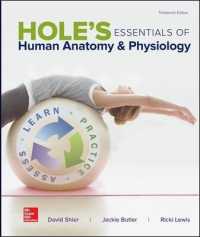Full Description
A Student-Friendly Guide to Move from Civil Law to U.S. Common Law provides an overview of the differences in the study and practice of law for international LLM students trying to transition from their home country's civil law legal system to the U.S. common law system. The vast majority of countries in the world are civil code jurisdictions that rely almost solely on statutes (codes) to define their laws. However, common law countries—such as the US, Canada, and Great Britain—have multiple sources of law, including constitutions, statutes, regulations, and cases decided by the courts. These court cases have the same force of law as the other sources within their respective jurisdictions, and thus the resulting decisions must be followed in future cases, unless otherwise nullified.
To help students who may feel overwhelmed adjusting to a new approach to legal education, this book focuses on these key differences between civil law and common law jurisdictions. It defines and demonstrates the application of key concepts with examples, illustrations, and exercises. While relatively brief, it provides numerous references to the other texts and sources for students wanting or needing more depth for some of the topics. The book also includes numerous examples illustrating the differences, with an emphasis on common law examples, of key documents and processes used in the practice of law. Further, it includes student-focused exercises and questions on the analytical and rhetorical skills needed for a successful law practice, whether the student will continue in a common law jurisdiction or merely needs to understand the common law for continued practice in their civil law jurisdiction.
Within this book, students will find
a brief historical background regarding the development of the common law system;
a description of the US government structure, with an emphasis on the judicial branch;
key rhetorical and analytical differences between civil law and common law;
numerous examples of differences between the two systems, with an emphasis on common law requirements;
and exercises for practice with key concepts and terminology.
Contents
Acknowledgments
List of Figures
Preface
Chapter 1: Overview of American Common Law
Chapter 2: Sources of Legal Authority and Researching Law
Chapter 3: Law School Education in the United States
Chapter 4: Legal Rhetoric and Legal Writing
Chapter 5: Legal Logic, Legal Rules, and Legal Analysis
Chapter 6: A Lawyer's Work Product—Common Law and Civil Law Examples
Appendix A: Answers to Questions and Exercises in the Chapters
Appendix B: Preparing for and Taking Law School Exams
Appendix C: Note Regarding Persuasive Writing
Bibliography
Index








